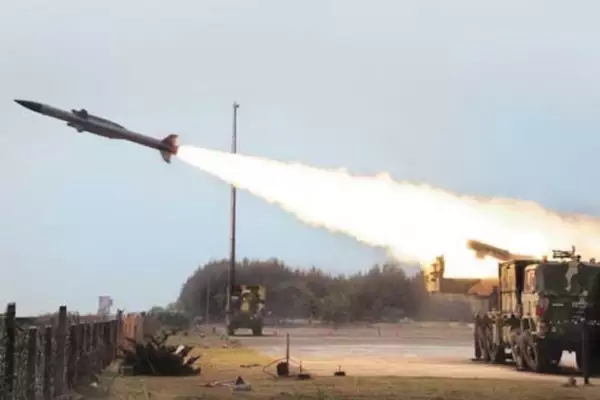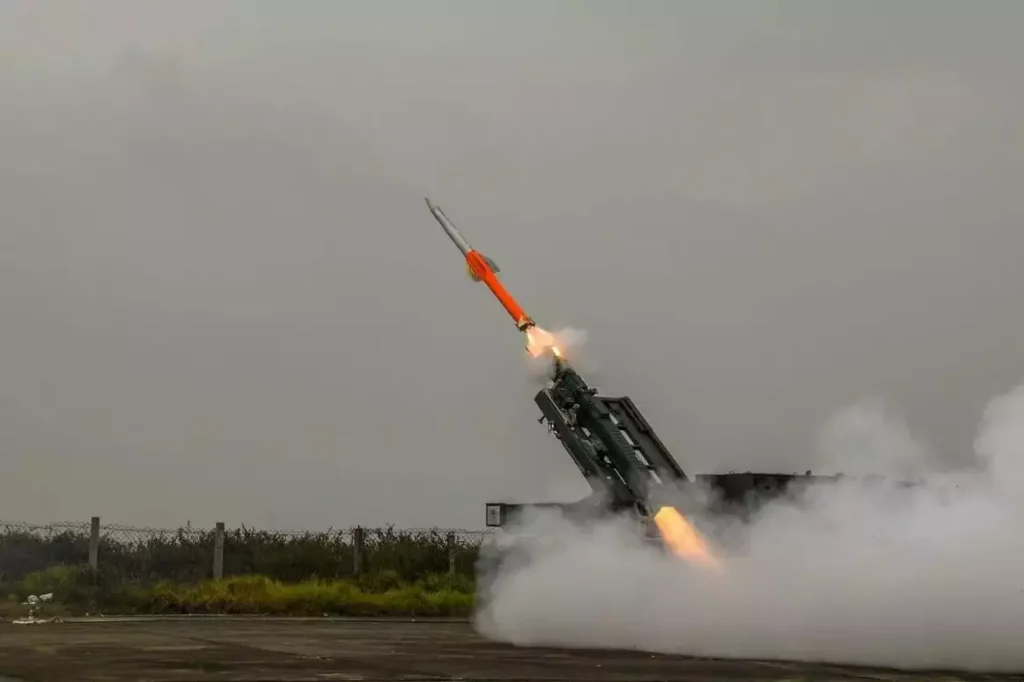Vertical Launch Short Range Surface-to-Air Missile (VL-SRSAM) was successfully flight-tested recently by the Defence Research and Development Organisation (DRDO) and the Indian Navy from the Integrated Test Range (ITR) in Chandipur, Odisha.
About the VL–SRSAM:
- Type: Vertically launched surface-to-air missile.
- Capability: All-weather, designed for use by the Indian Navy.
- Purpose: Neutralizes various aerial threats at close ranges, including sea-skimming targets.
- Key Component: Indigenous Radio Frequency (RF) seeker.
System Validation and Monitoring:
- Upgraded Elements Tested: Proximity Fuse and Seeker.
- Performance Assessment: Conducted using flight data captured by multiple range instruments, including Radar, Electro-Optical Tracking System (EOTS), and Telemetry.
- Monitoring: The test was closely observed by senior scientists from various DRDO laboratories and representatives from the Indian Navy.
- Capacity: Each VLS can hold up to 40 missiles in a twin quad-pack canister configuration (eight missiles per canister).
Technical Specifications:
- Mid-Course Flight: Uses a fibre-optic gyroscope-based inertial guidance mechanism.
- Terminal Phase: Employs active radar homing.
- Capabilities: Lock on Before Launch (LOBL) and Lock on After Launch (LOAL) with mid-course updates via datalink.
- Design Basis: Based on the Astra Mark 1 air-to-air missile with aerodynamic stability provided by four short-span long-chord cruciform wings.
Significance:
- Operational Enhancement: The successful test of VL-SRSAM enhances the Indian Navy’s capability to counter aerial threats effectively.
- Development: Reflects the progress in indigenous missile technology and the ongoing efforts to strengthen national defense capabilities.
Ref: Source
| UPSC IAS Preparation Resources | |
| Current Affairs Analysis | Topperspedia |
| GS Shots | Simply Explained |
| Daily Flash Cards | Daily Quiz |
Frequently Asked Question:
What is the purpose of the VL-SRSAM?
It is designed to neutralize various aerial threats, including sea-skimming targets, for the Indian Navy.
What is unique about the VL-SRSAM’s guidance system?
It features a fibre-optic gyroscope for mid-course guidance and active radar homing in the terminal phase.
What components were tested during the recent VL-SRSAM flight test?
The test validated the missile’s proximity fuse and indigenous RF seeker.
How does the VL-SRSAM enhance naval operations?
It provides the Indian Navy with advanced capabilities to effectively counter close-range aerial threats.
What is the basis of the VL-SRSAM design?
It is based on the Astra Mark 1 air-to-air missile, with
modifications for aerodynamic stability and enhanced performance.



